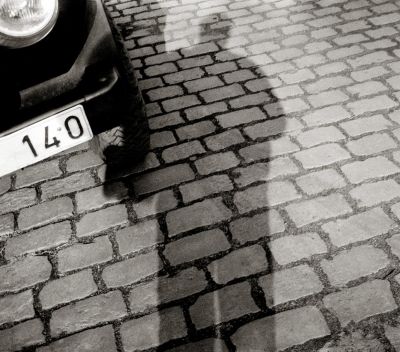Stefan Arczyński. A master of photography spanning two cultures
Mediathek Sorted



















































































The challenges of war
In 1938, Arczyński as a citizen of the German Reich, is called up for compulsory labour service and then, when the Second World War breaks out, he is conscripted to the German military where he first serves in the air force and later in the infantry. His profession as a photographer saved him from being assigned to the units that invaded Poland. His brother Tadeusz, on the other hand, was involved in the invasion of Poland and fought as an officer in the Polish Army.
During all this, the Arczyński siblings were beset by great tragedy. Following the outbreak of war, mass arrests of members of Polish organisations in Germany were made. Most of the prisoners were deported to camps where some of them lost their lives. This was also the fate of their father, Wiktor Arczyński, who was arrested and sentenced to death for “friendliness to Poles” along with other Krupp employees who, like him, were members of the Union of Poles in Germany. He was executed in Berlin in 1940. Stefan Arczyński was also held for a few weeks in the Berlin-Moabit and Berlin-Plötzensee prisons and confronted with his father until he was eventually released and seconded to his unit in the air force.
This regiment, in which Arczyński developed and saved aerial photographs, was involved in the French campaign. Later, he was sent to the Eastern front where he was took part in the assault on the Soviet Union and was involved in the battles for Stalingrad. He always had his camera with him at the front. In January 1942, he was wounded and given medical treatment in Artjomowsk which saved him from death in the Stalingrad Cauldron. After his discharge from hospital, he was sent back to the front. In the military convalescence hospitals in Kłodzko Land, Kłodzko and Międzygórze, he gradually regained his strength. Once he was back on his feet, he was again sent back to his air force unit at the eastern front which, at this time, was stationed in the Baltic Region. He passed the end of the war in Latvia, where he ended up a prisoner of the Russians. In Latvia he had a number of jobs, including working in a matchstick factory, a brewery and a sawmill. He was very fortunate that he was not deported to deepest Russia.
After several months in captivity, the Russians handed him over to the Polish authorities. The reasons given for his release were his Polish heritage and the tragic fate of his father, an official in the Union of Poles in Germany. He was placed in the transit camp in Sieraków near Poznań.
The fate of his brother Tadeusz after the war was quite different. After the Soviet invasion of Poland, he ended up in Latvia where he was settled after the Russian annexation of the Republic and taken to a labour camp in Siberia. He finally left the USSR with the Anders-Armee, named after the Polish general Władysław Anders, and was then involved in battles in Italy, including near Monte Cassino. After the war, he did not return to Poland but remained abroad, finally settling in California in the United States.























































































